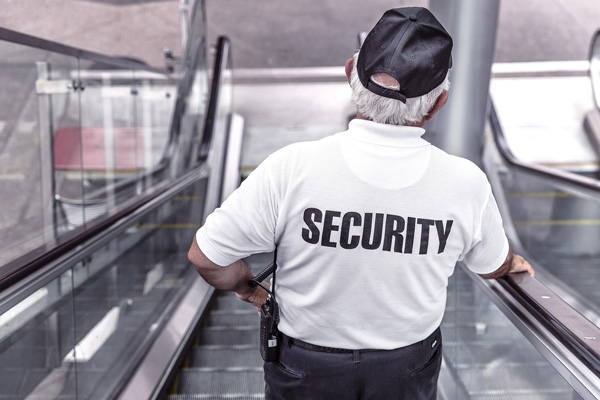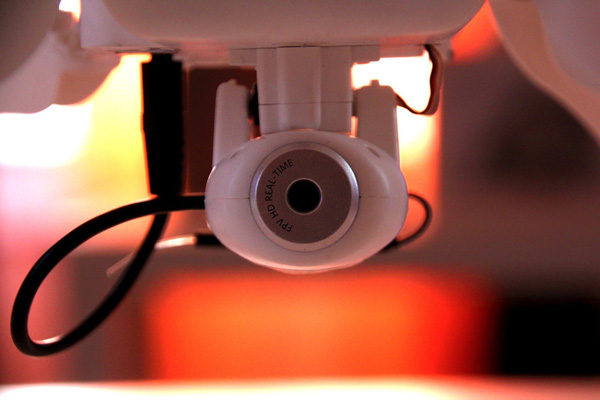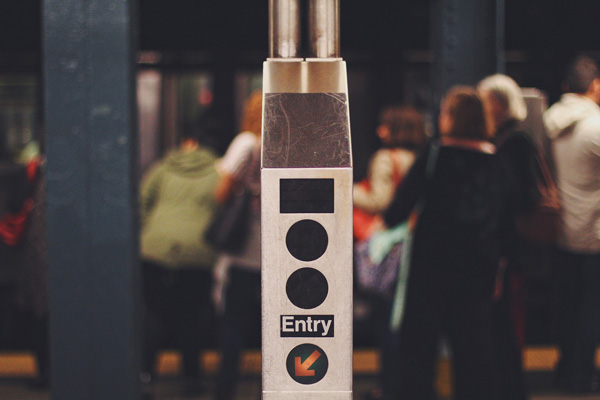
Comprehensive security today is more easily attainable with smart devices that communicate with each other, robots that assist officers and advances in building design. Protecting lives and assets, privacy and productivity, and layers of security are necessary for organizations of every size.
Each facility and business, however, is unique and will require a security plan tailored specifically to meet its current needs, with the ability to scale and adapt.
We’ve looked at what experts in the field recommend, and how you can map out security measures that work for your site and budget.
Designing Security
Security starts in the building design.
“Other than establishing a protected perimeter,” the the WBDG Secure/Safe Committee writes, “these protective measures are generally achieved through principles of structural dynamics, nonlinear material response, and ductile detailing.”
They give an example of features that can make a building more secure, which include those found in the Oklahoma City Federal Building: setbacks, bollards, protective glazing, and structural hardening. What’s good to note here is that some of these measures can be added while renovating an existing structure.
Take bollards, for instance, which are mainly used to protect people and property from vehicle crashes, both accidental and intentional. They are easy to install at almost any any property, and they are very effective.
“These perimeter security solutions are designed to protect a commercial property, government installation or military installation from unintentional vehicle collisions and vehicle-based attacks,” explains the team at Tymetal Corp., a manufacturer of security gates and crash bollards. “They also are perfect for protecting people in restaurants with outdoor seating as well as retail stores that face parking areas or traffic lanes.”

How To Best Use Cameras and Lighting in Security
When a facilities manager is involved in a new build project, WM Security in California says there are several elements to be aware of regarding construction site security:
- Adequate security can deter theft and vandalism and reduce trespass liability.
- Security requirements evolve with a project, and should be planned for accordingly.
- Theft or vandalism of construction equipment is costly not just in terms of repair and replacement, but also in terms of lost time.
- Supplies are subject to loss and internal theft as well as external theft.
- Adequate security lowers insurance costs.
- Security can serve as an “extra set of eyes” for reporting safety and maintenance issues.
Surveillance cameras are useful as theft deterrents, and placing them in plain view outside of a structure is recommended, Ralph Goodman writes at Kabbage. Covert placement of cameras is useful inside a building to “document theft to build cases against employees, partners, vendors, etc.,” he says.
Amy Milshtein at Facility Executive warns, however, that “getting these two technologies working together takes a bit of finesse.” Too much light in the camera’s field of vision creates a “hot spot” in the image, for example, and seasonal landscaping must be taken into consider because something like heavy shadows can obscure or completely block a camera’s view.
Of course, you could just forego lighting entirely. Going dark can make your facility Dark Sky compliant, reducing light pollution and energy consumption. “But there are other, stealthier, motives for not lighting a building,” Milshtein adds. “Sometimes an organization doesn’t want to attract attention to its assets; for instance, a sensitive government facility may not want to broadcast its location. Or it might be a large, unattractive manufacturing plant right next to a suburban neighborhood.”
In those cases, infrared surveillance cameras may be the security measure of choice.
Does Your Facility Need Security Officers?
Morey Stettner at the Edward Lowe Foundation, which supports second-stage entrepreneurial companies, sees employee safety at work as a priority, not merely a legal obligation. Some security steps are easy to implement, such as better parking lot lighting, security cameras in high-risk areas and emergency evacuation training.
Other steps, like hiring security guards, can be a long-term expense, and whether that expense is worthwhile depends on the facility, its business, its size and other factors. Stettner suggests conducting a safety audit:
“Create a checklist to analyze potential perils. Include sections on risks posed by both criminal attackers (including disturbed former or current employees, customers and the general public) and emergencies that may require evacuation (such as those caused by a fire, chemical leak or natural disaster).”
If employees are at potential risk (handling valuables or working alone late at night), security officers may be helpful. If employees work off-site, other security measures may be more beneficial.

What to Look for When Hiring a Security Company
Robert Sollars at Silvertrac, a security system reporting provider, calls security officers “the backbone of the security industry” and says the outdated idea of a watchman whose function was just to be visible has changed radically.
“The modern security officer, in most cases, is charged with so much more than just the front gate and fire watch,” Sollars writes. “Officers have to monitor fire, burglar, hazardous chemical, heating/cooling, alarms, and CCTVs. They make extensive patrols through hazardous areas, maintain access control, provide customer service, and remain constantly observant.
“Depending on where an officer is working, they may be entrusted to hundreds of millions of dollars worth of assets for the company. That calls for a professional officer who can think and act like a professional.”
Security training and licensing courses exist, such as those offered by ESS Global in Florida. Offering security services, ESS also trains students in threat assessment and situational awareness, church security, handcuffing and tactical baton use, defensive tactics and more.
Personnel with this level training are often used to secure venues at large-scale events like concerts and sporting events. Just the presence of security may keep management safe when the need arises to terminate one or more employees. Other one-off corporate functions such as seminars, galas and benefits might also require security officers.
Apogee Security in Atlanta writes that before hiring a security company, check that it is properly licensed by the state. Unlicensed companies will not have insurance or workers compensation, and may not have properly trained officers.
It should be noted, however, that not every state requires security companies to be bonded, even though fidelity bonds help fill gaps in general liability insurance coverage. Furthermore, according to insurance provider BSGI, not all bonding is the same, but generally can protect a security company from legal situations arising from theft and property damage.
Robots and Smart Locks Add Security, Savings and Convenience
While autonomous data machines (ADMs), or robots, designed specifically for security aren’t going to eliminate human security personnel jobs, Allied Universal vice president Mark McCourt says they’re “a real force multiplier by adding effectiveness and efficiency to security programs.”
Benefits to having robots supplement your security force include constant coverage, improved information sharing and faster response times. Security officers engage with robots via an app, using them as “smart eyes and ears” from wherever on the grounds they happen to be patrolling.
Even if your budget doesn’t allow robots, you can still improve security in your buildings. Smart locks, for example, are upgrades over badges and proximity cards for entry. BizTech’s Phil Goldstein writes that even small businesses can increase their physical security measures, citing as one such example smart locks, which “let firms add barriers to doors and unlock the doors remotely via wireless protocols.”
It’s not just security that’s enhanced by replacing physical access cards: They’re ultimately cheaper and more convenient. “Tying together digital identification with mobile-based access control allows occupants to use their smartphones to move about a workplace instead of relying on an access card or fob, enabling occupants to carry one less item,” Sanjay Roy at Facility Executive writes.
“In addition, these types of solutions also allow occupants to open doors from greater distances than traditional access cards and fobs, adding to the convenience.”
Credits:
Ryan McGuireLeamsii
Unsplash

